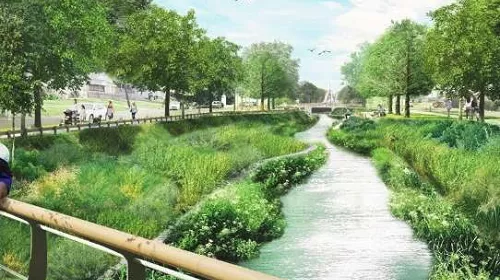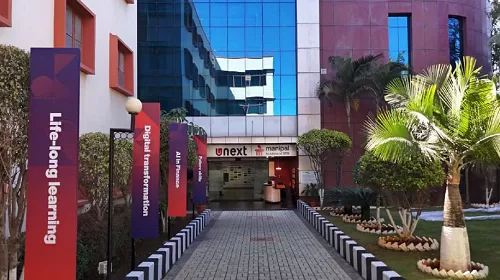By Subhash Sethi, Chairman, SPML Infra Limited
Water is vital to human sustainability and economic growth. Globally, the number of water scarce regions is rising every year threatening the well-being of its people and the economy.
Global pressure on water utilities are varying from region to region on water availability, usage and wastage. The most significant factor that utilities across regions faces regularly is the huge volume of water losses, which represents the water that isn’t accounted for despite necessary resources applied by them. High volume of water wastage and unviable usage patterns are not just a domestic issue that the world is facing, agricultural practices, industrial and commercial consumption are adding to the issues of water sustainability. In the agriculture sector, water is being wasted due to inefficient irrigation systems, commercially, the volume of water is being used at times and places when not required and domestically, the smallest of problems such as leaking pipe causes for some water wastage. The old and aged distribution network also contributes to huge losses. The year 2020 mark the start of a new decade – Water is vital to human sustainability and economic growth. Globally, the number of water scarce regions is rising every year threatening the well-being of its people and the economy. brought forth the challenges that have been never faced before. The health and safety of people became the most serious priority in the wake of raging pandemic that disturbed the entire global population. The human casualties that reached closely to 5 million mark with 240 million affected people globally is a matter of great concern and the situation although got better in the latter half of 2021; the infectious disease is still spreading and claiming thousands of lives every day. It presented a different kind of challenge to water utilities to safeguard the water sources and supplies from getting contaminated with deadly virus. The necessity of smart and intelligent water network with technology intervention and automation was never felt so strongly before. This is a perfect time to reflect upon what is coming and prioritise where to focus our efforts in making water management smart and responsible. The water industry is most likely to embrace several changes in the years to come due to present and emerging challenges including pandemic disruption, rapid urbanization, changes in usage pattern, rising customer demands, climate changes, industrial and agricultural requirements and implementation of evolving digital technologies. These changes will inflict the water industry with a complex set of challenges that will require strategic planning and direction to address and adopt in order to stay cognizant. In this context, it’s now time to think deeply with matching solutions to consider the obstacles coming into being and not only how to address it, but also turn it into opportunities that benefit businesses, customers and the environment. From taking action oriented efforts to considering how smart technologies can be introduced and managed while creating opportunities will be in focus in the coming years.
Smart Water Network :- Smart water network solutions improve the reliability of physical water infrastructure by collecting and analysing data more efficiently for effective decision making and operational management. The use of Internet of Things (IoT) devices and data analytics not only help to monitor water activities and generate real-time data to better manage infrastructure and reduce non[1]revenue water losses, but also support important changes to the ways water utilities and companies operate. Smart end-to-end water network offer businesses the opportunity to improve productivity and efficiency while enhancing customer service. The incorporation of digital technology along with connected devices and systems are intended to achieve a greater efficiency in day to day operations, decrease manual intervention, better control on water losses, reduce management expenses and improve other indicators including the water footprint.The implementation of smart water network combined with AMI leak detection technique can majorly reduce the amount of revenue loss due to leakages and wastage, as well as water wastage overall. Smart water networks have been on special focus worldwide as new challenges being faced from higher percentage of water losses to severe and extreme water scarcity in both developed and developing countries. With new instrumentation option for water production, transmission, distribution, wastewater collection, and consumer end-point; implementing these technologies can improve the efficiency and reliability of water networks, but with myriad options, utilities need guidance on which technologies are most suitable to their needs and how they should be implemented. Leak Detection with AMI Water loss or non-revenue water is the top most issues facing by the water utilities. According to a report, an estimated 8 trillion litres of treated drinking water leaks each year from out[1]dated systems in the US only. Across UK, about 1.1 trillion litres of water is lost every year. The average household’s leaks can account for nearly 45,500 litres of water wasted every year and 10 percent of homes have leaks that waste 400 litres or more per day. India is not behind in this scenario and household leaks in the country approximately waste nearly 3.4 trillion litres of water annually. The World Bank has calculated that the cost of non-revenue water due to frequent leaks along with standard theft and billing errors exceeds $14 billion per year globally. This wasted water is a direct revenue loss to the government and it is calculated by finding the difference between the amount of water put into the distribution system and the amount of water eventually billed to consumers. The volume of NRW in India is the inefficiencies of water supply systems as water utilities are unable to curb water loss despite having water conservation as their primary purpose. There are ways to control water loss with better monitoring and control by dividing the network into smaller sections into district metering areas, an efficient technique that helps in easier planning and control for the operators. The pressure management is considered to be the most cost[1]effective leakage prevention activity, and water utilities should adopt and invest in improving it. Most pipe bursts happen due to ongoing pressure 100 MLD WTP, Goa fluctuations that constantly force pipes to expand and contract, resulting in stress fractures. Pressure should be kept at a minimum to protect pipes, though it should not be so low as to affect the consumer’s needs. With advanced metering infrastructure (AMI) systems, a module could take readings of water consumption on an hourly basis to ensure pressure is at a safe level. An AMI system can be a fundamental component of any water conservation program. Managing supply network while detecting and stopping leaks allows water that would otherwise have been wasted to be conserved. There are three steps utilities can take to use AMI leak detection to conserve water: metered leak detection, district metering leak detection and acoustic leak detection. Each method leverages specific aspects of AMI technology to detect leaks in different ways. AMI solutions transform data collected through the system into valuable and actionable intelligence for users across the utility, empowering the entire organization to address conservation and revenue protection. The AMI will help in improvements in supply network and utilities can reduce NRW level in their service areas. It will ultimately result in reducing the amount of water that utilities must extract, treat and pump to meet the demand. This would also reduce the amount of energy required to pump the water and the amount of carbon emissions produced, providing other diverse benefits. Smart Sensors Water utilities across the globe are using sensors in their networks of pipes and junctions in an effort to detect leaks. Sensors have been used for years to some extent but with the water scarcity and increasing supplies to meet the demand, water utilities are under tremendous pressure to control the loss, plug the leaks and make water available and accountable. The advanced sensors use accelerometers, the same technology that detects movement on smartphones as it pick up vibrations that may be associated with a leak somewhere along the length of a pipe. Sensors are being deployed including acoustic loggers which have the capability to listen for the characteristic hum created by a leaky pipe and the artificial intelligence (AI) system will refine on thousands of these recordings to issue an alert with precise location. A sensor with AI system is very successful as it can pick up leaks with more than 90 per cent accuracy. Real-time data can be used to identify the status of a water distribution system at a particular point in time. Through the analysis of collected data, various performance trends under different conditions can be identified and worked upon. The analysed real-time data can be further used to evaluate the performance of the system under different conditions and adjust accordingly. The other advance technology that helps to make water pipes smart is narrowband internet of things (NB-IoT) communications, a means of transmitting signals from thousands of remote sensors that uses just a small part of bandwidth to do so. It is very effective in leak detection as pipe sensors sends far more frequent updates to a central control system without draining their 2587 MLD Pumping House for SAUNI Yojana Phase-1, Gujarat Annapoonga Water Reservoir, Chennai batteries which has several years of lifetime capacity. Water utilities in several countries are putting NB-IoT acoustic logger sensors around its network that are designed to wake up at the designated time when water supply begins in the city to record audio from a pipe and transmit the same to a central control system. Should a leak be heard, the system can calculate roughly where it might be along the selected length of a pipe based on the speed at which sound travels through the pipe’s material.The collected data gets sent to the software which compares it with neighbouring loggers to see if two loggers have heard the same noise. It helps the engineers managing the operations at the control unit to take informed and precautionary measures before the leak could become a problem.
Best Practices :- The importance of pure and hygienic water is very high in Japan and Tokyo is having one of the most effective water systems in the world.They have zero tolerance against water leakage, and due to the commitment of repairing the water leakage in the same day has helped them to reduce the leakage rate from 20 per cent in 1956 to just about 2 per cent in 2018 and it is further working to plug even this minimal leak. There is a program called the Bureau of Waterworks which aims to manage the essential water resources in effective ways, this program takes preventive measures to stop leakage before any collateral damage may happen. The Bureau of Waterworks in Tokyo had completely replaced the service pipes in the city’s water distribution system. Every pipe connecting the large diameter water mains pipe to narrower household and commercial pipes was changed to a stainless steel one by replacing the old lead and ductile iron pipes that reduced the break and leaks significantly. Their efforts bear the good results in terms of savings of approximately 200 million cubic metres of water and nearly $ 4 billion that excluding the indirect cost benefits such as reduced reservoir development, repair and maintenance. SPML Infra – Connecting with Technology SPML Infra continues to promote and embrace innovation in project execution, operation and control. The smart water networks have emerged as a popular way to use technology to optimize water supply systems. As technological advancements continue to change the water sector, it continue with testing and adopting digital technology for managing city water supply networks in Karnataka and Delhi apart from using modern and advanced technological intervention in day to day management. The IT team along with field engineers and managers analyse the requirement, recommends, supports, and conducts continuing assessments of technologies and techniques to promote the overall understanding of the application, control equipment and automation, and computers and telecommunications to the management of information in the water and power projects. It also provides the opportunity to equip engineers and management professionals with new skill sets and knowledge. Sauni Phase 1 Pumping Station, Gujarat Leakage is one of the biggest challenges that require special attention as we know how important water has become now. Way Forward An intelligent water network is the most desirable solution to address the challenges water utilities are facing that is becoming severe with the passage of time. In order to make a water supply intelligent, it is necessary to have effective control on the supply system with proper consideration to available source, water pressure, water quality and contamination issues. The challenges are to streamline the operation, maintain and increase safety of the supply network and water quality, and at the same time protect the environment and water source. An intelligent water network concept incorporates smart supervisory control, instrumentation, information management and water treatment systems that are linked to solve problems and provide a formidable solution that balances people and the environment.





